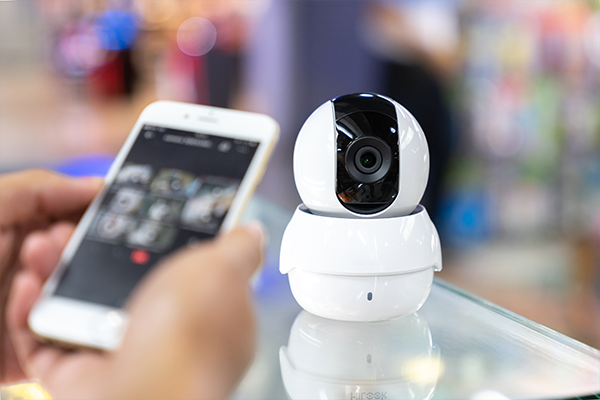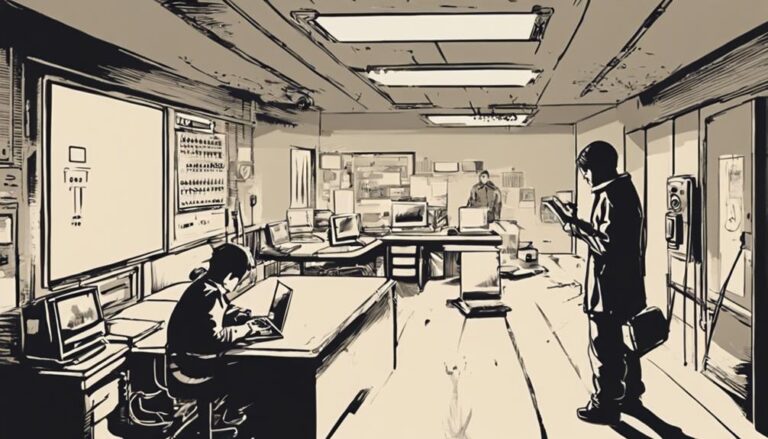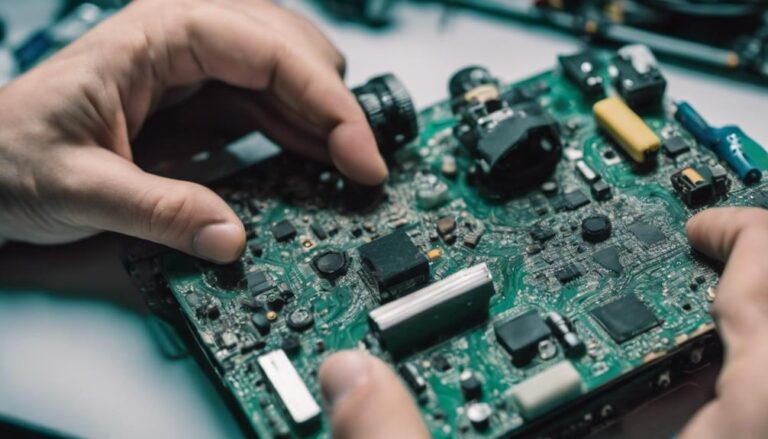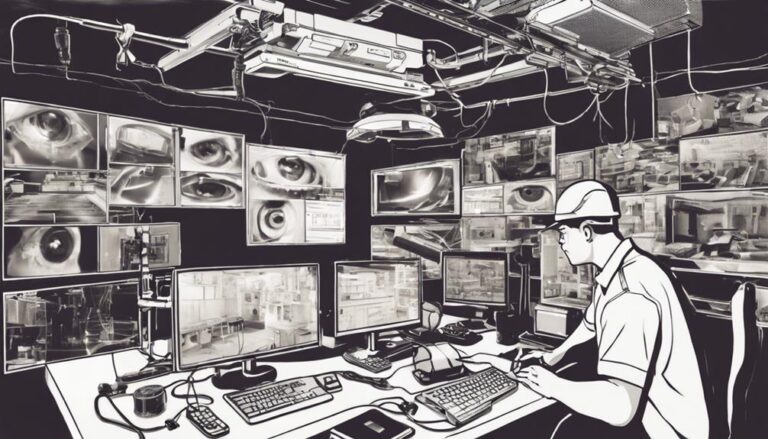You’ll need anywhere from 2 to 16 Mbps per security camera, depending on factors like resolution, frame rate, and compression settings. Higher resolutions like 1080p and especially 4K will demand more bandwidth. Opting for motion-triggered recording over continuous recording can save on data usage. Don’t forget, the number of cameras and your network’s infrastructure also play critical roles. Using efficient codecs like H.264 or H.265 can also help manage your bandwidth needs. Interested in optimizing your system for performance and efficiency? Keep going to get the full picture.
Factors Influencing Bandwidth
Several factors influence the bandwidth needed for security cameras, including resolution, frame rate, and the number of cameras in use. If you value your freedom and want to make sure your security system doesn’t slow down your network, understanding these factors is essential.
First, video quality greatly impacts how much bandwidth you’ll need. Higher video quality means more data is being transmitted. If you’re aiming for crystal-clear footage, be prepared for higher bandwidth requirements. Conversely, if you can compromise a bit on video quality, you’ll save on bandwidth.
Then there’s the frame rate, which refers to how many frames per second (fps) your camera captures. A higher frame rate results in smoother video but also demands more bandwidth. If you’re monitoring a high-traffic area, you might want a higher frame rate to capture every detail. However, if the area is low-activity, a lower frame rate could suffice, freeing up some bandwidth.
Balancing these factors allows you to maintain the freedom of a smooth-running network while ensuring your security cameras are up to the task. It’s all about finding that perfect middle ground that supports both your security needs and your desire for network efficiency.
Camera Resolution Requirements
Understanding camera resolution requirements is essential for guaranteeing your security system captures clear and detailed footage. You want to be confident that your cameras deliver high image quality, especially if you’re protecting your home or business. Resolution settings play a crucial role here. Higher resolution means more pixels, translating to sharper images and finer details.
For most security needs, a 1080p camera offers a good balance of image quality and bandwidth usage. If you crave more freedom to zoom in on footage without losing clarity, consider 4K resolution cameras. They provide exceptional detail but require more bandwidth and storage. However, if you’re more concerned with conserving bandwidth, a 720p camera might suffice for general monitoring.
Keep in mind that your resolution settings will directly impact your bandwidth needs. Higher resolution settings—like 4K—demand more Mbps to stream smoothly. Lower settings, while saving bandwidth, may compromise the clarity of your footage. It’s all about finding the right balance that suits your specific needs and gives you the freedom to monitor your property effectively. So, decide on the resolution that aligns with your priorities and guarantees you don’t miss any vital details.
Number of Cameras
When planning your security system, the number of cameras you need is vital for thorough coverage. You’ve got to think about the areas you want to monitor and how many cameras will give you that peace of mind without feeling restricted. Start by mapping out the key spots around your property. Camera placement is important—consider entry points, blind spots, and high-traffic areas.
The types of cameras you choose also matter. Do you need dome cameras for 360-degree views, bullet cameras for long-range monitoring, or maybe even hidden cameras for discreet surveillance? Each type has its pros and cons, and the number you require will depend on your specific needs and the layout of your property.
Continuous Vs. Motion Recording
When deciding between continuous and motion recording for your security cameras, consider the differences in bandwidth usage and storage needs. Continuous recording requires more bandwidth and storage, potentially leading to higher costs. Motion recording, however, saves resources by only capturing footage when movement is detected.
Bandwidth Usage Differences
Continuous recording consumes considerably more bandwidth compared to motion-triggered recording due to the constant data stream. If you’re looking for freedom from data caps or slowdowns, you’ll want to balance your needs carefully. Continuous recording requires a steady stream of data being sent to your storage device, and this can quickly add up, especially if you’re using high-definition cameras.
Video codecs like H.264 and H.265 can help compress the video data, making it more manageable. However, even with these codecs, the amount of bandwidth consumed remains markedly higher than that of motion-triggered recording. Motion-triggered recording only sends data when the camera detects movement, significantly reducing the bandwidth usage and freeing up your network for other tasks. This can be a game-changer if you have multiple devices connected to your wireless network.
Speaking of wireless, beware of wireless interference. Continuous recording can exacerbate issues with network congestion, especially if you live in a crowded area with many competing signals. With motion-triggered recording, the data flow is intermittent, giving your network the breathing room it needs to function smoothly. Choose wisely based on your specific needs and embrace the freedom of a more efficient system.
Storage Requirements Comparison
While both continuous and motion-triggered recording have their advantages, understanding the storage requirements for each can help you make an informed decision. Continuous recording captures every moment, ensuring you don’t miss a thing, but it consumes a lot of storage. Motion-triggered recording, on the other hand, only records when it detects movement, saving significant storage space.
Here’s a quick comparison to help you visualize the differences:
| Recording Type | Cloud Storage | Local Storage |
|---|---|---|
| Continuous | High usage, costly | High capacity needed |
| Motion-Triggered | Moderate usage | Less capacity needed |
| Flexibility | Unlimited access | Limited by hardware |
If you value complete coverage and don’t mind the higher storage costs, continuous recording might be for you. However, if you’re looking to optimize storage and reduce costs, motion-triggered recording offers a more efficient solution.
Choosing between cloud storage and local storage also plays an important role. Cloud storage provides you with the freedom to access footage from anywhere but can get pricey. Local storage offers more control and avoids monthly fees but is limited by physical capacity. Weigh your needs and resources to find the perfect balance for your security setup.
Network Infrastructure
When planning your network infrastructure for security cameras, it’s important to think about bandwidth allocation strategies to guarantee smooth operation. You’ll also need to carefully select the right routers and switches to handle the data load. By focusing on these key areas, you can optimize your system’s performance and reliability.
Bandwidth Allocation Strategies
Effective bandwidth allocation strategies are essential to guarantee that your security cameras operate smoothly without overloading your network. First and foremost, you need to focus on data allocation. Each security camera consumes a portion of your available bandwidth, and without proper planning, you could easily find your network overwhelmed, leading to lag or even loss of important footage.
Bandwidth planning is your roadmap to freedom. By carefully determining how much bandwidth each camera requires and how often data needs to be transmitted, you can make sure that your network remains robust and efficient. Start by evaluating the resolution and frame rate of each camera, as higher resolutions and frame rates will demand more bandwidth. It’s also vital to contemplate the types of activities being monitored; high-traffic areas might need more frequent updates.
Additionally, segregate your network to prioritize critical data. Allocating specific bandwidth limits to each camera helps in preventing any single device from hogging the network. This way, you’ll maintain a balance, ensuring all your cameras function efficiently. Remember, a well-planned network frees you from constant monitoring and troubleshooting, letting you focus on what truly matters—your security.
Router and Switches Selection
To guarantee that your security cameras perform at their best, selecting the right routers and switches is essential for a well-structured network infrastructure. You’ve got to make sure that your router placement is strategic, providing excellent coverage and minimizing dead spots. A poor placement can lead to weak signals and slow data transmission, which is the last thing you want for your security system.
When it comes to switches, their capacity is equally significant. You need a switch that can handle the data load from all your cameras without becoming a bottleneck. Here’s a quick comparison to help you make informed choices:
| Component | Key Feature | Considerations |
|---|---|---|
| Router | Placement | Central location, away from obstructions |
| Switch | Port Capacity | Number of cameras and data throughput |
| Router | Bandwidth Support | Should support high Mbps for clarity |
| Switch | Power over Ethernet (PoE) | Simplifies camera installation |
Data Compression Techniques
In today’s digital age, understanding data compression techniques can greatly enhance the efficiency of your security camera system. By mastering this, you’ll guarantee high-quality footage without maxing out your bandwidth. The first thing to grasp is the various codec types available. Codecs are algorithms that compress and decompress digital video. H.264 and H.265 are two of the most popular codecs you’ll encounter. H.264 offers a solid balance between compression and quality, while H.265 provides even better compression rates, saving bandwidth and storage space.
Bitrate control is another critical aspect to take into account. Variable Bitrate (VBR) and Constant Bitrate (CBR) are the two main types. VBR adjusts the bitrate according to the complexity of the video scene, providing higher quality during complex scenes and saving bandwidth during simpler ones. CBR, on the other hand, maintains a consistent bitrate, ensuring smooth streaming but potentially wasting bandwidth on simpler scenes.
Estimating Your Bandwidth Needs
When estimating your bandwidth needs for security cameras, you’ll want to take into account both the number of cameras and the quality of the footage they capture. Remote monitoring is a vital aspect of why bandwidth matters; you need a smooth, uninterrupted feed to truly feel secure.
Here are some key factors to bear in mind:
- Number of Cameras: The more cameras you have, the more bandwidth you’ll need. Each camera adds to the data load on your network, so plan accordingly.
- Resolution Quality: Higher resolution means clearer images, but it also means more data. If you opt for HD or 4K footage, be prepared for a significant increase in bandwidth requirements.
- Frame Rate: A higher frame rate delivers smoother video but consumes more bandwidth. Decide what’s essential for your security needs without overburdening your network.
- Weather Conditions: Cameras in areas subject to harsh weather conditions may need higher bandwidth to compensate for potential interference, ensuring you always get a clear feed.
Balancing these factors is essential for efficient remote monitoring. You don’t want to overspend on bandwidth, but you also don’t want to skimp and miss important details. Assess your specific needs carefully, and you’ll find the right balance.
Frequently Asked Questions
How Does Internet Speed Affect Remote Viewing of Security Footage?
Your internet speed’s vital for smooth remote viewing. Low speeds cause latency impact and bandwidth throttling, disrupting your freedom to monitor events in real-time. You need a fast connection to guarantee seamless, uninterrupted access to your footage.
What Is the Recommended Upload Speed for Cloud-Based Security Camera Systems?
For cloud-based security camera systems, you’ll want an upload speed of at least 5 Mbps per camera. This guarantees smooth data encryption and seamless cloud storage, giving you peace of mind without tethering your freedom.
Can Poor Bandwidth Cause Security Camera Footage to Be Pixelated or Laggy?
Absolutely, poor bandwidth can make your security camera footage look like an old VHS tape. Video compression and resolution settings play a huge role. Without enough bandwidth, you’ll face pixelation and lag, limiting your freedom to monitor effectively.
How Do Wired and Wireless Security Cameras Differ in Bandwidth Usage?
Wired cameras don’t face signal interference, offering stable data encryption. Wireless cameras, though flexible, might have bandwidth issues due to interference. Your choice depends on whether you prioritize stability or the freedom to place cameras anywhere.
Are There Specific Routers or Modems That Optimize Bandwidth for Security Cameras?
Oh, because freedom means dealing with tech specs, right? Yes, specific routers and modems optimize bandwidth for security cameras. Look for advanced router features and verify modem compatibility. Enjoy the liberty of seamless surveillance!



